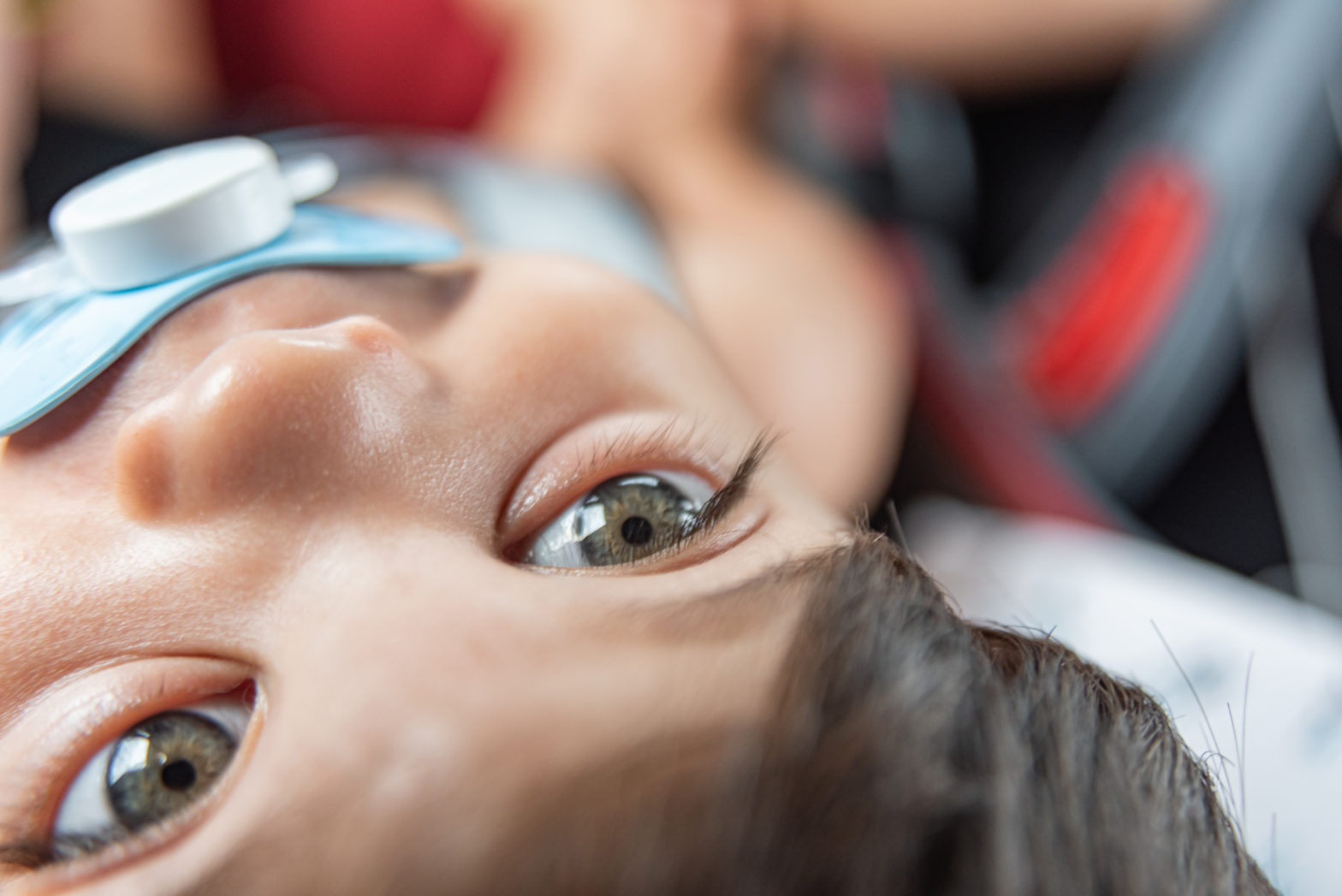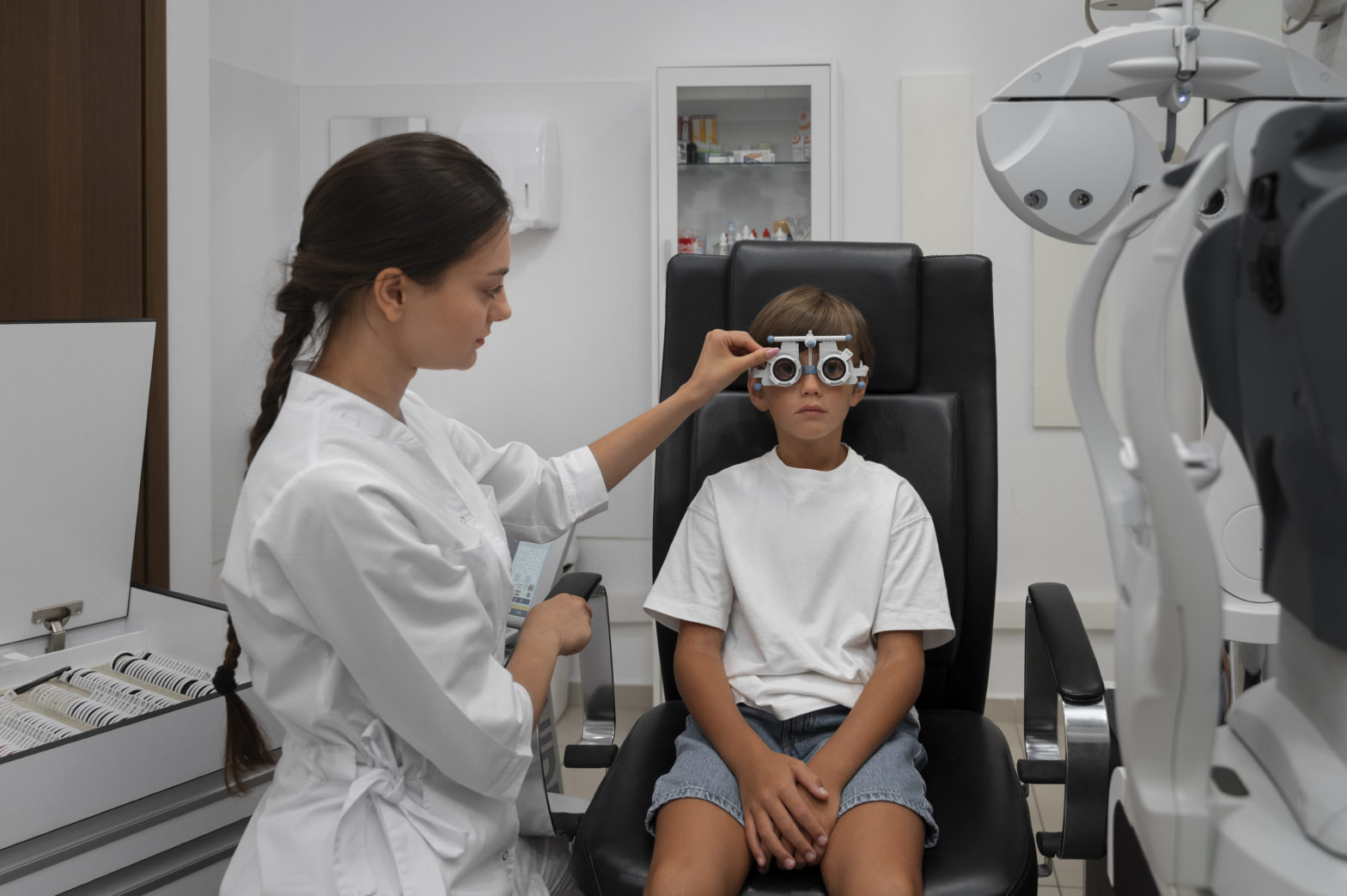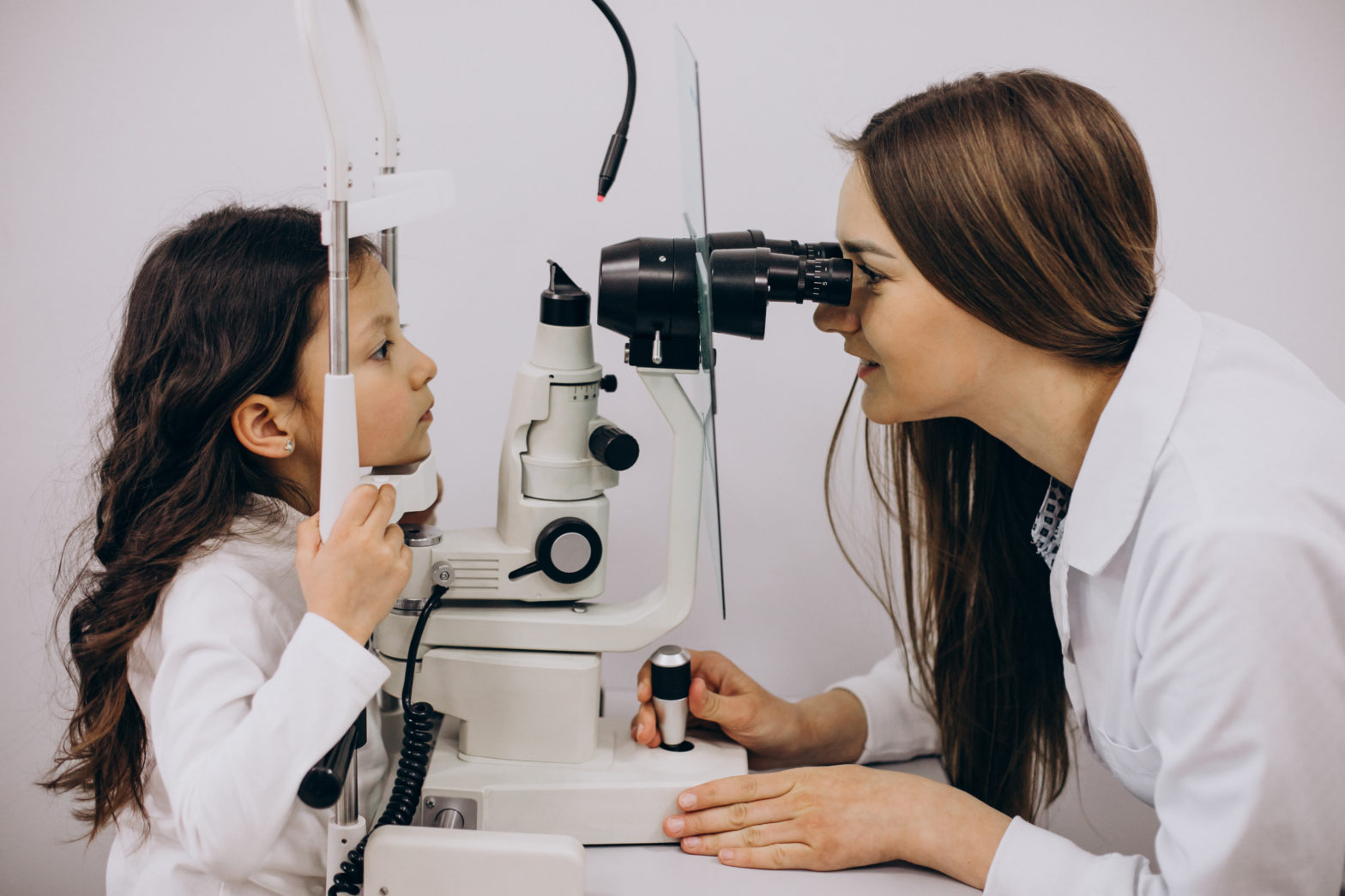Seher is an 11-year-old student who has consistently scored good grades for the last 5 years. The other day, when she was asked to attend a parent-teacher meeting with her mother, things went well like every other time. However, her teacher highlighted one concern—Seher had trouble taking notes from the blackboard.
Even though Seher had refractive glasses for myopia since the tender age of 5, she still had a problem reading the blackboard without straining her eyes. While driving back home, this one concern pushed her mom to immediately book an appointment with us for the next day.
When we met Seher, she came across as a sharp and silent girl who was fond of activities like reading, swimming, and singing. After a casual conversation and learning about her medical history, our team of experts could make out that all the symptoms pointed towards astigmatism. However, we told them that in order to formally diagnose the problem, we need to conduct a thorough eye examination test.
When they came the next day, we ran Seher through a comprehensive eye exam that involved a series of tests on the refraction and the eye’s overall health, which is integral to determine how eyes bend the light.
In order to conduct these tests, we used our best-in-class equipment, tools, and technology while aiming lights at her eyes and asking her to look through multiple lenses. Once the diagnostic test was over, the results clearly pointed toward astigmatism.
What Is Astigmatism?
Astigmatism is referred to as an eye condition in which the eye, cornea, or the clear front part of the eyeball is not completely round. Usually, a normal eyeball is shaped like a round ball; therefore, when light enters and bends in an even manner, it gives a clear view of the surrounding.
On the other hand, if the eyeball is more like a football in shape, the light gets bent in one direction, which makes distant things look wavy and burry. In many cases, the primary cause of astigmatism is hereditary. Additionally, astigmatism can also result from eyelids putting pressure on the cornea, previous eye surgeries, eye injuries, and more.
For your comprehension, we have mentioned some of the many symptoms of astigmatism:
- Squinting
- Fatigue
- Frequent headaches
- Discomfort or eye strain
- Distorted or blurred vision
After the results, we could notice slight nervousness and anxiety in her mother’s demeanour. That’s when we sat them down and made them understand that eye conditions like astigmatism are easily treatable via corrective lenses and refractive surgery. Here is an insight into two types of astigmatism correction lenses used for treating this eye condition:
- Contact lenses: Just like eyeglasses, contact lenses are capable of correcting astigmatism. In addition, an astigmatism lens is also used in a medical procedure called orthokeratology, whereas, in an astigmatism treatment, the patient is asked to wear rigid and tight contact lenses while sleeping to even out the curvature of the eye. However, in the future, patients are advised to wear these lenses less frequently to optimally maintain the new shape.
- Eyeglasses: As a part of astigmatism treatment, these eyeglasses are made with special lenses that can compensate for uneven eye shape. These lenses or glasses ensure that the light is properly bent into the eye. Additionally, eyeglasses are also used to correct other refractive errors like farsightedness and near-sightedness.
What is a Refractive Surgery?
As mentioned above, another way to treat astigmatism is by refractive surgery. It significantly improves vision and lowers the need for contact lenses or eyeglasses. In order to conduct this surgery, the eye surgeon uses a laser beam to gently reshape the curves of the cornea in order to correct the refractive error. There are 5 types of refractive surgeries used for astigmatism treatment:
- Epi-LASIK
- Photorefractive keratectomy (PRK)
- Small incision lenticule extraction (SMILE)
- Laser-assisted in-situ keratomileusis (Lasik)
- Laser-assisted subepithelial keratectomy (LASEK)
Also, there are other types of refractive surgeries that include implantable contact lenses and clear lens extraction. Vision loss, corneal scarring, visual side effects, and overcorrection/ under correction of the problem are some of the many complications that might occur after refractive surgery.
After proposing all the available options for astigmatism treatment, we suggested Seher a pair of astigmatism lenses that could help her with symptoms like headaches and vision troubles. We also asked her mother to book consistent eye appointments with us, so we can take follow-ups on her eye condition. The other day we heard that her new pair of glasses has helped her achieve impressive grades, making her the class topper of the year!
Seek Best-in-Class Astigmatism Treatment with Dr Agarwals Eye Hospital
With top-notch technology and state-of-the-art infrastructure, our team of expert professionals have been revolutionising healthcare since 1957. We have been at the forefront of eye care for over six decades offering treatments for several eye diseases like cataracts, macular holes, glaucoma, squint, astigmatism, retinal detachment, and more.
For astigmatism, we are fully equipped to offer solutions like PRK or photorefractive keratectomy, a type of refractive laser surgery to correct both mild and severe vision problems. Explore our official Dr. Agarwal website to know more.









